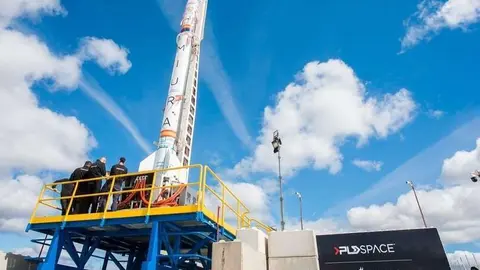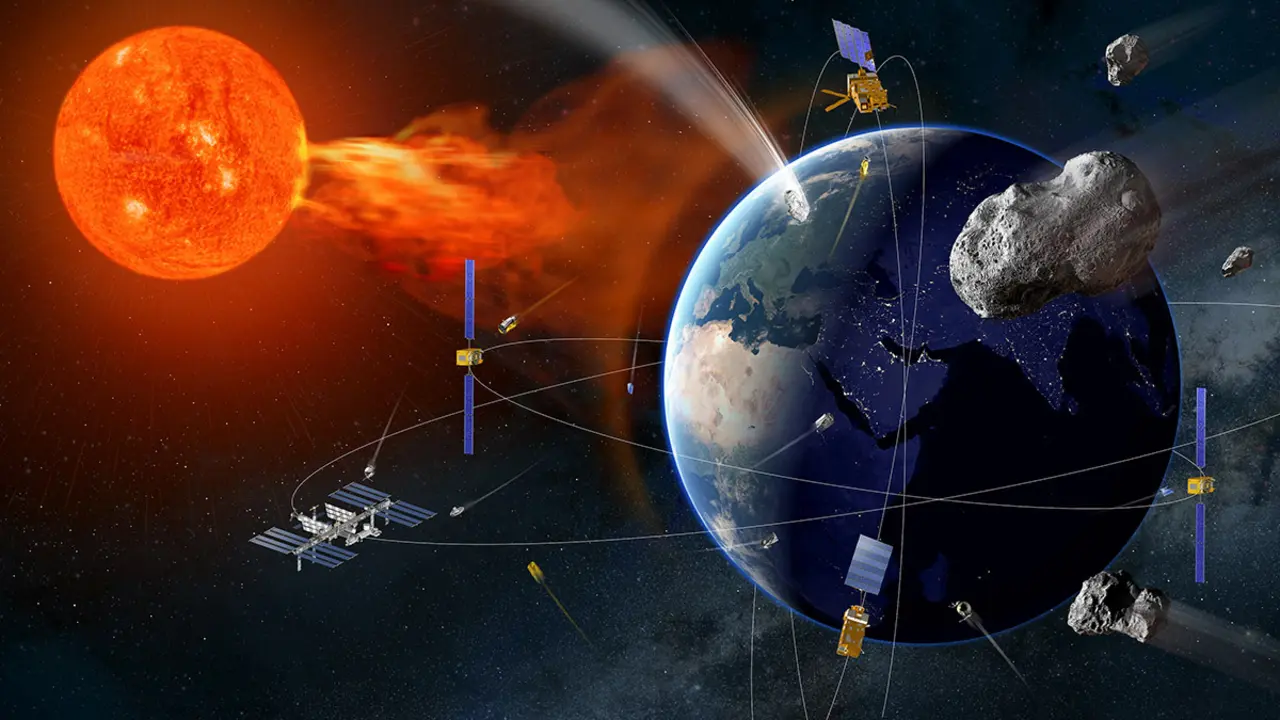PLD wants its Miura 5 rocket to take off from French Guiana in early 2026

The co-founder of Spanish company PLD Space, Raúl Torres, has revealed that the maiden flight of its future Miura 5 commercial launcher, which the company wants to be Europe's first private space rocket, will take off "in the first quarter of 2026".
In the absence of suitable facilities in Spain, it will be from the Kourou space base in French Guiana, a vast area in the middle of the Amazon rainforest next to the Atlantic coast. It is equipped by the French Space Agency (CNES) and the European Space Agency (ESA) to launch the future Ariane 6, the current Vega and Vega-C and, in the near future, a small number of so-called micro-launchers, such as the Miura 5.
"For us, Kourou is our first spaceport and we are looking forward to flying from there," confirms Raúl Verdú, the company's Business Development Director and co-founder of the company in 2011, together with Raúl Torres.

But PLD is not content with just using the Guayana space base. Verdú says his company intends for the Miura 5 to be able to take off "from different places". "We are preparing a study of all the existing spaceports and those that are being finalised to deploy our launch capability in other geographies," he says.
What is the status of the Miura 5 development? With two propulsion stages, six rocket engines in total and much larger and more powerful than the experimental Miura 1, Raúl Torres assures that its development is progressing "at a good pace in all the subsystems", that the tests "will begin at the end of this year", because "our commitment is that in two years it will be ready to launch".

Building infrastructure for Miura 5 in French Guiana
The Miura 5 "is much more advanced than anyone can imagine". We have "a model already built, the rocket engines and turbo pumps are in the production process and the avionics and structures are very advanced," says Torres.
If the forecasts are met, "it will be completed and will be ready to be shown in the last months of 2025", Torres anticipates. It will then be transferred to the Kourou base "for its maiden flight to take place in the first quarter of 2026. Those are the dates we are looking at today.
However, for the Miura 5 to take off from Kourou, the ground infrastructures to make it possible must first be set up. Raúl Verdú points out that it will be "its own launch pad, which we are not going to share with any other launch vehicle". Regarding the cost of construction, Torres says that he cannot give an exact figure, but that it will be "in the order of 15 million euros".

Raúl Verdú, who is in charge of finding the market, says that right now the company has commercial opportunities "for more than 320 million euros, with which we could complete the first 10 or 12 launches". With these expectations, "next year we will begin to close these first binding agreements and have our launch manifesto for 2025 and 2026".
PLD has broken down the challenge to become the first Spanish launch services company into two stages. The first phase consisted of developing and firing the Miura 1 demonstrator rocket. Its purpose was to identify points of improvement to fine-tune the Miura 5, the ultimate goal of the first Spanish company formed to provide launch services to low orbits in outer space.

The decision on a second Miura 1 will be taken by the end of the year
The Miura 1 experimental vector was launched last 7 October from the National Institute for Aerospace Technology (INTA) in Huelva, performed a suborbital flight, fell into the Atlantic waters, sank and has not been recovered.
Miura 1 did not cross the Karman line, the imaginary 100-kilometre limit that is recognised for international purposes as entering outer space. According to information provided by PLD, the Miura 1's apogee - the maximum height it reached - was programmed to reach 46 kilometres, so it reached the stratosphere, the second of the four atmospheric layers that envelop the Earth.

But PLD is happy and satisfied, because the company and its engineers have acquired a great deal of knowledge to complete the development of the Miura 5, a space launcher that should indeed exceed the Karman line, go beyond it and place small satellites weighing between 500 kilos and up to 1 tonne into Earth orbit.
Raúl Torres stresses that "Miura 5 will be a much better rocket thanks to the lessons learned from the flight of Miura 1". PLD states that they have identified "more than 1,000 points of improvement", more than a thousand actions "that we are going to apply to the final development of the Miura 5".

On the possibility of a second Miura 1 take-off to complete the milestones that were defined for its maiden flight and have not been achieved - for example, reaching an altitude of 80 kilometres and verifying that it is recoverable - PLD CEO Ezequiel Sánchez confirms that the second rocket "is already in the works".
The company with its headquarters in Elche (Alicante) still has to complete the in-depth study of the thousands of data already obtained. "The decision will be taken before the end of the year", Ezequiel Sánchez and Raúl Torres confirm in unison, "provided that we reach the conclusion that the analysis of the information that a second launch of Miura 1 may or may not be relevant to the success of Miura 5".












